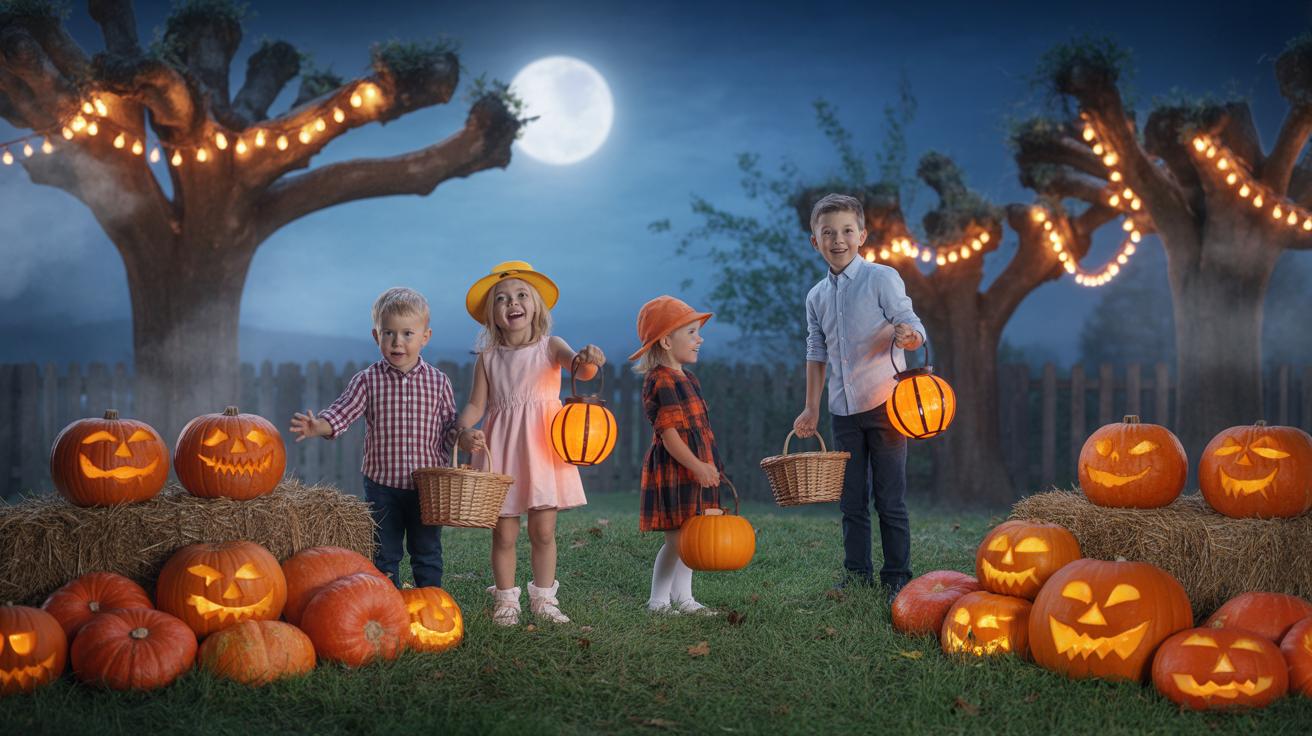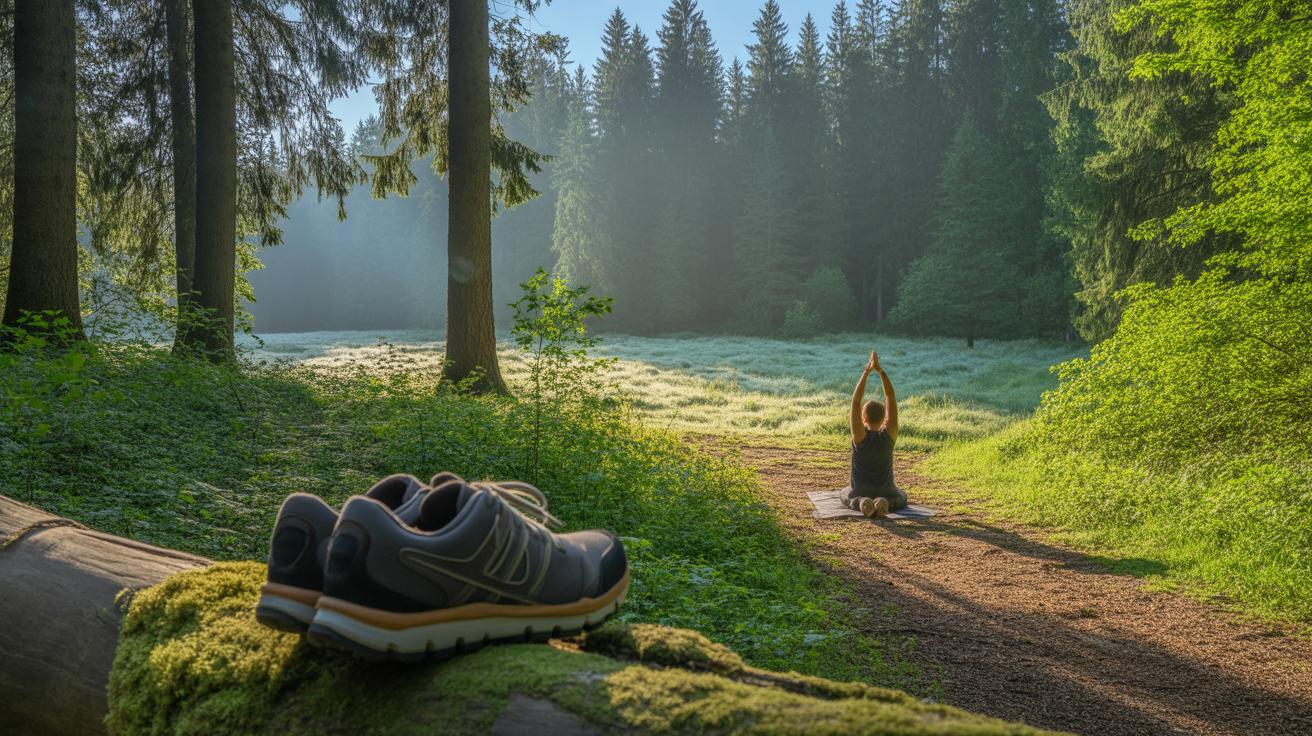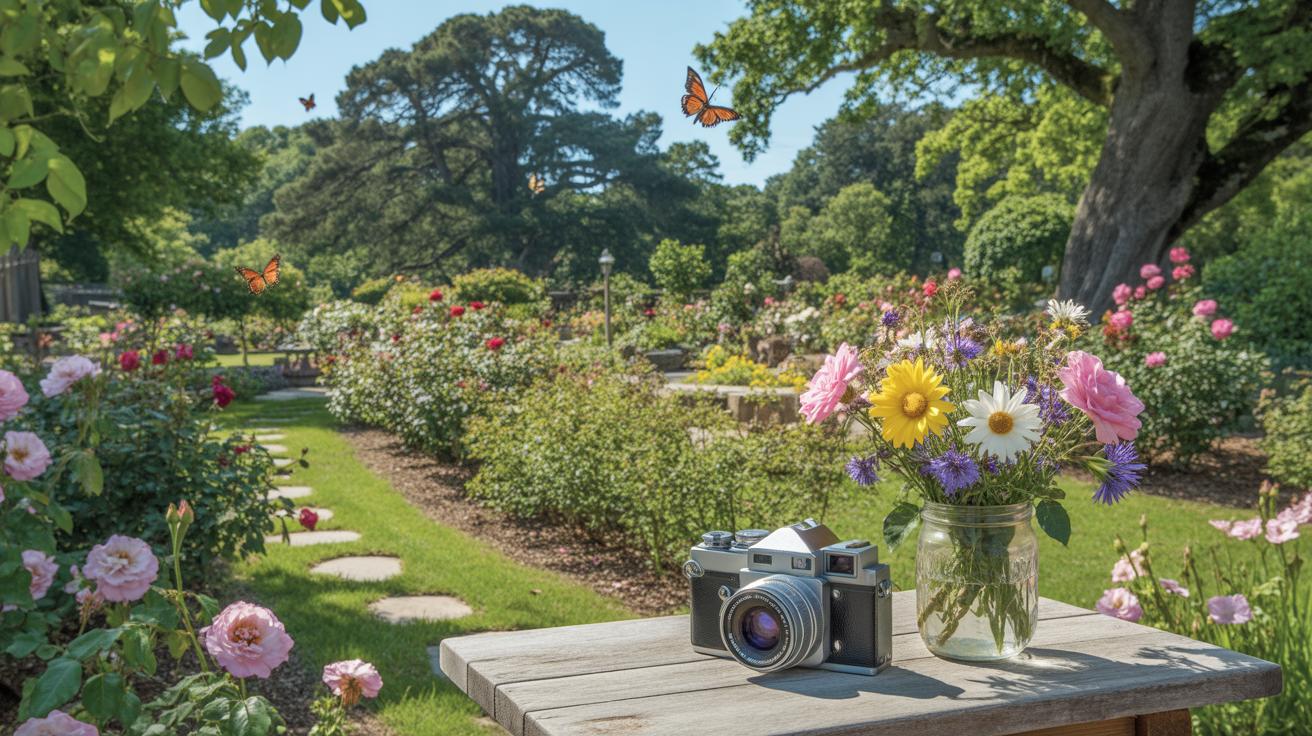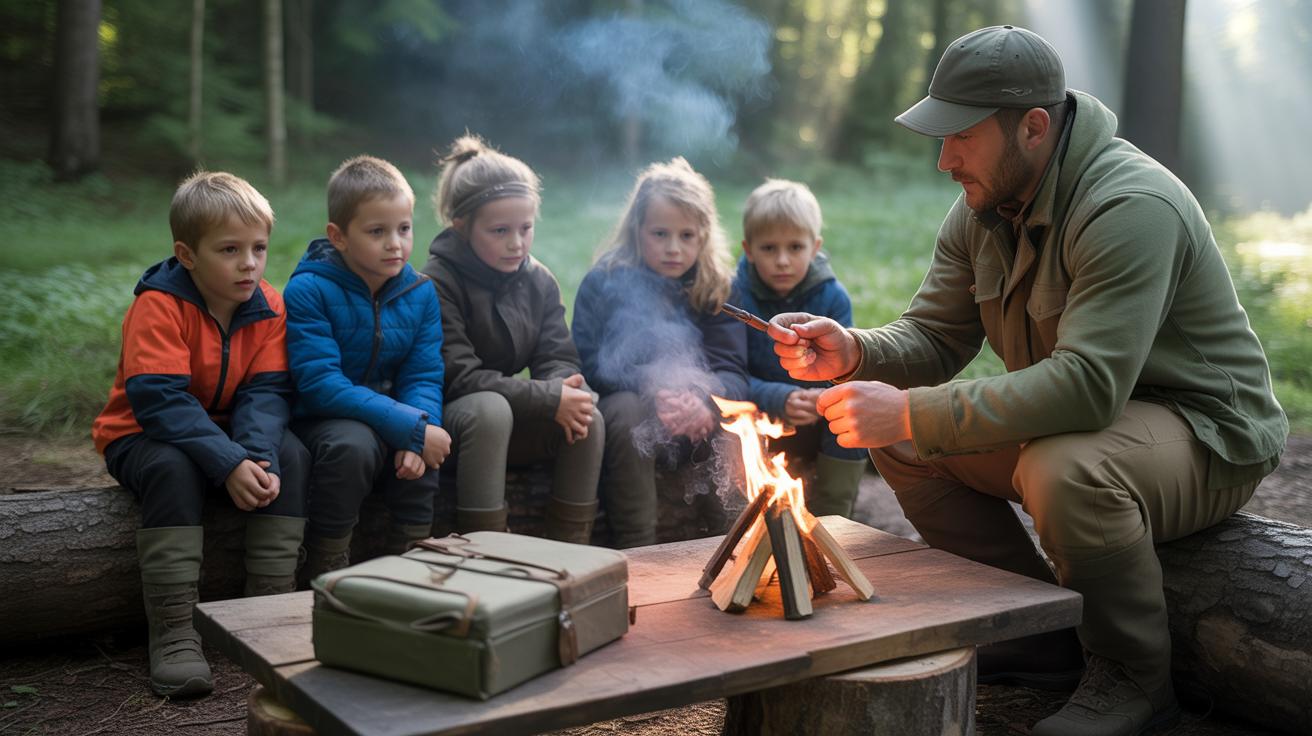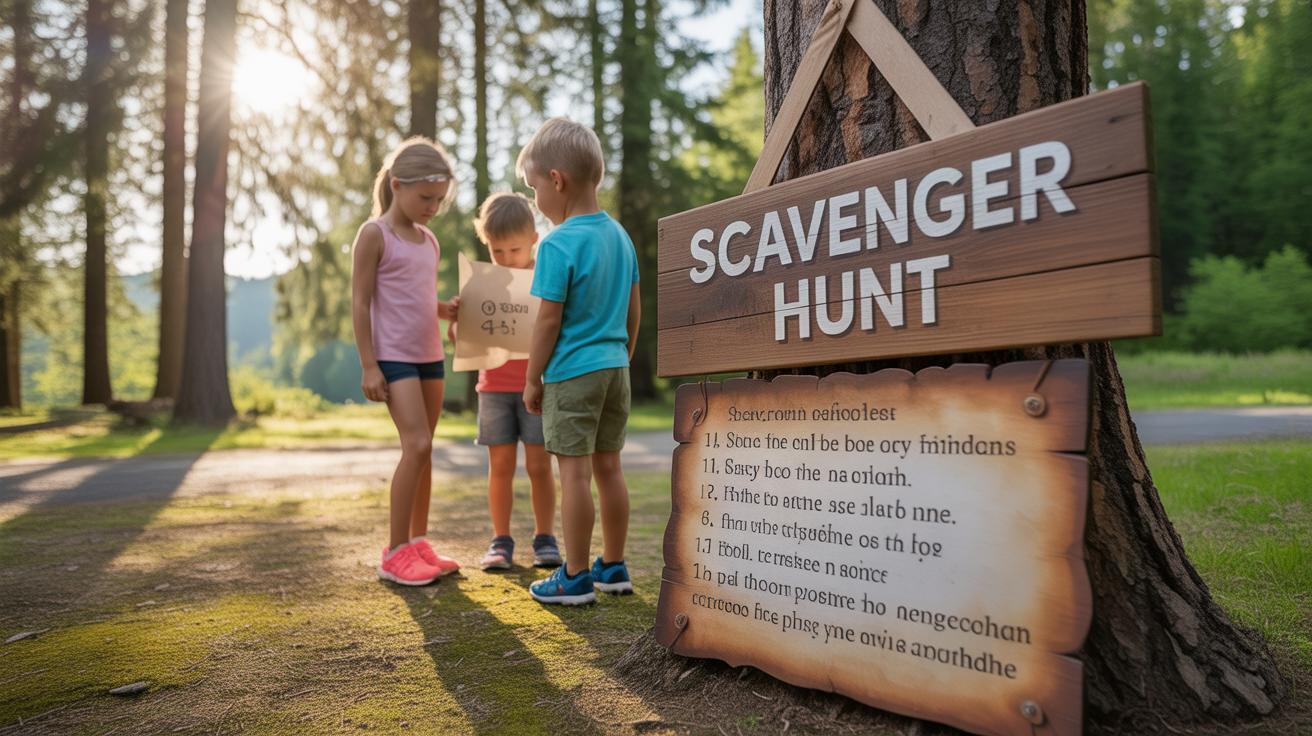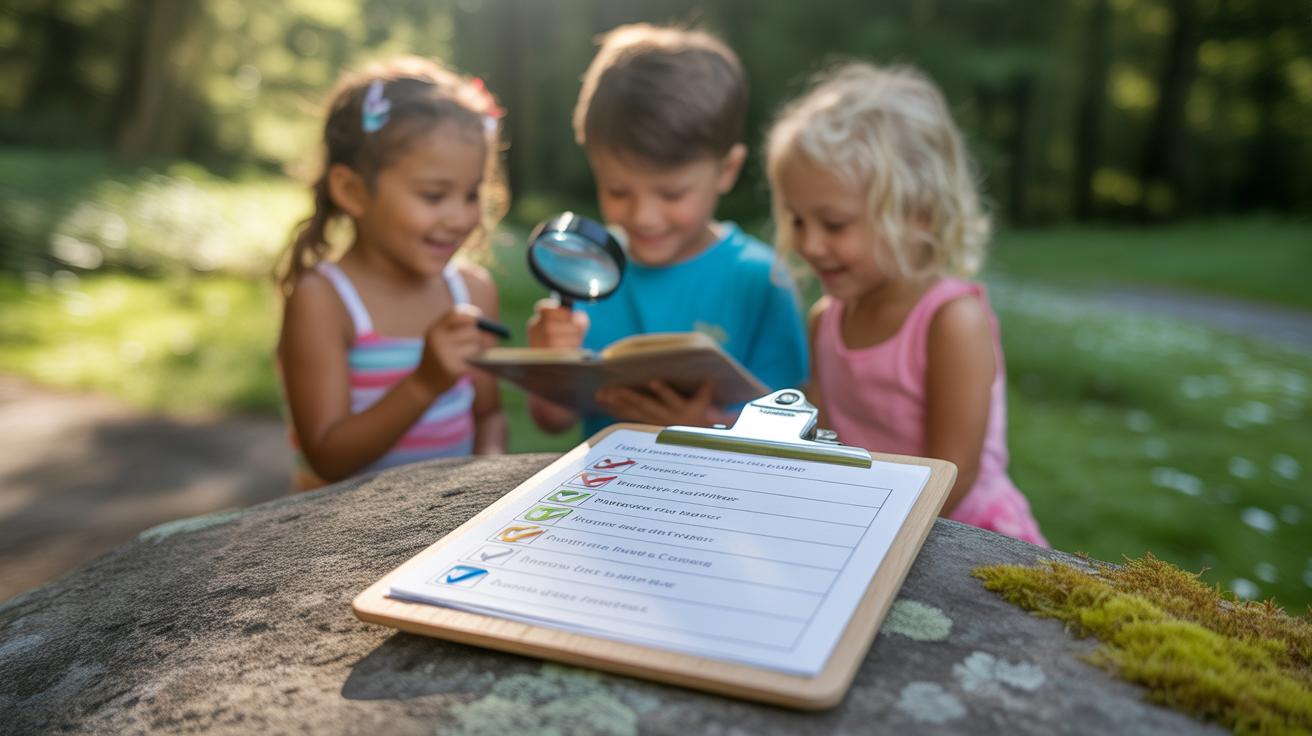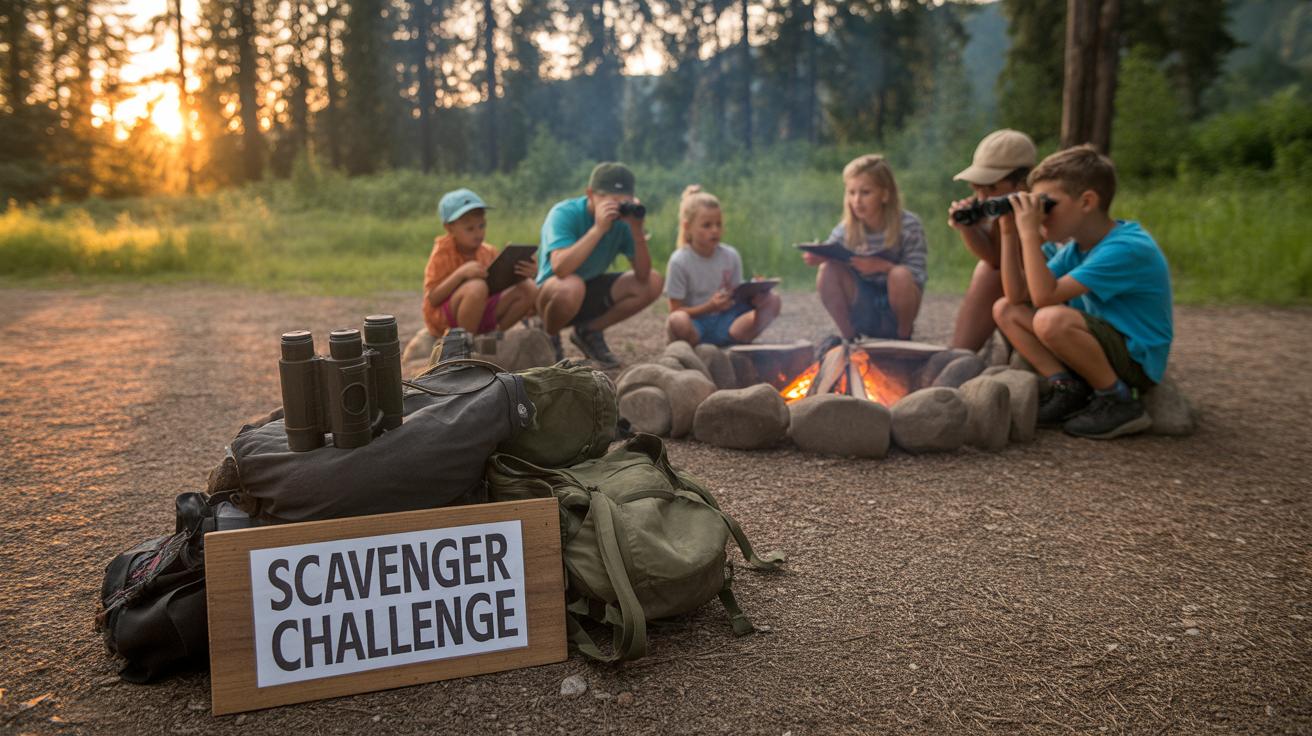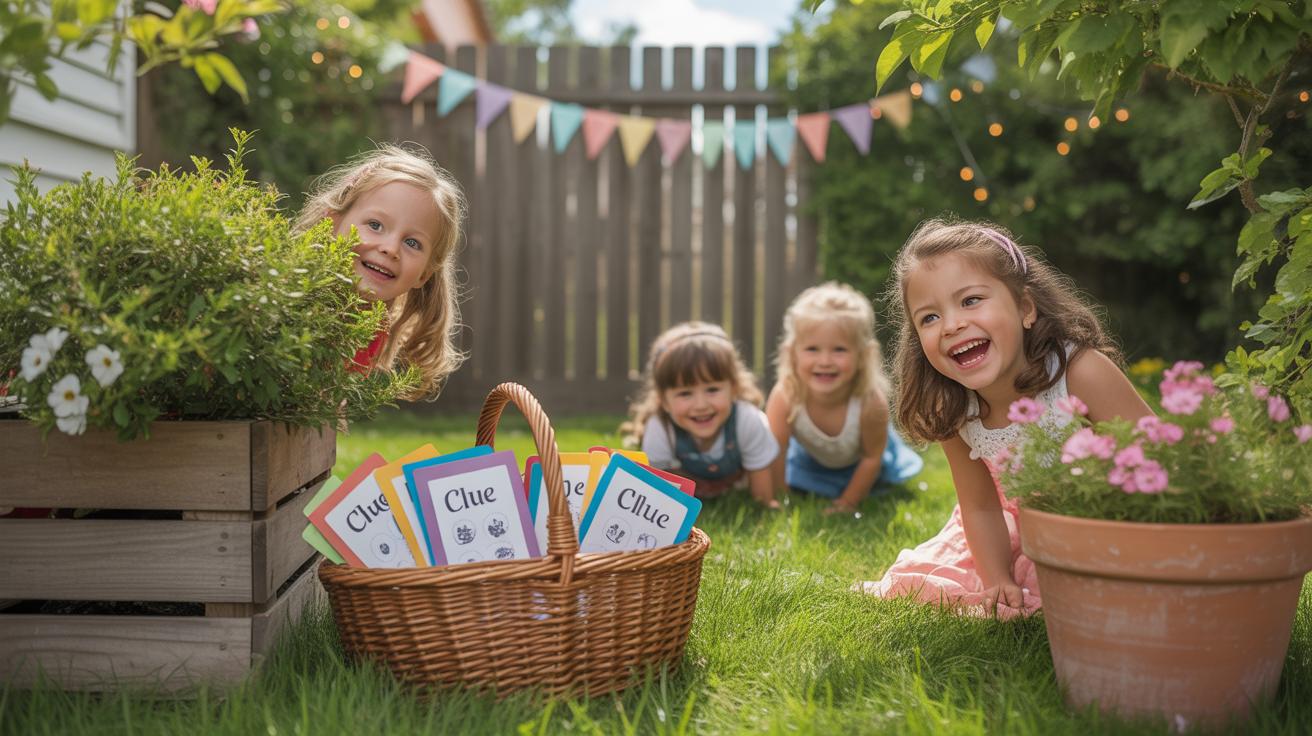Introduction
Halloween brings a unique chance to blend fun with creativity through activities that both kids and adults find exciting. One such activity gaining popularity is the Halloween scavenger hunt. This game turns your backyard into a spooky quest where participants seek hidden items or clues tied to the Halloween theme.
The Spooky Backyard Halloween Scavenger Hunt Adventure is more than just a game. It is a way to bring friends and family together, encourage teamwork, and add a fresh twist to Halloween celebrations. In this article, you will learn step-by-step how to design, plan, and enjoy a memorable scavenger hunt that fits the eerie spirit of Halloween.
Getting Ready for Your Halloween Scavenger Hunt
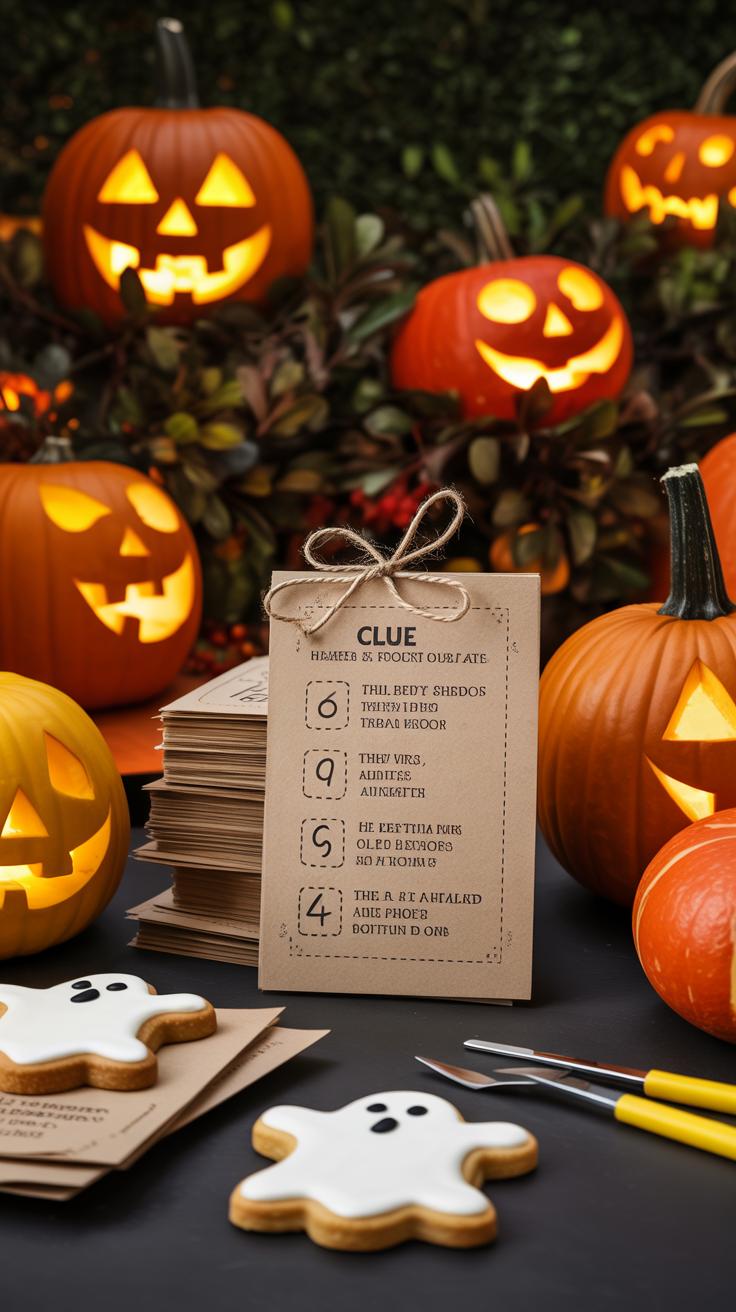
Choosing the Right Date and Time
Picking the right day for your backyard Halloween scavenger hunt can be a little tricky. You want it close enough to Halloween to catch that festive spirit, but not so close that everyone’s already booked with other plans. Some families might celebrate early or later, so maybe a weekend evening near the end of October works best. Think about when kids aren’t too tired or overwhelmed—early evening tends to be a good bet.
Also, consider the weather. Halloween night can get chilly, or occasionally a bit wet. You might want to choose a dry day or a time when there’s still some daylight left, especially if younger kids are involved. For teens, darker may actually add to the fun and mystery. It’s a balance, though—too dark and it could get frustrating to find stuff. You have to guess what fits your group.
Gathering Supplies and Setting the Scene
Before the hunt starts, gather your materials carefully. Think of the kinds of items you want to hide—plastic spiders, tiny pumpkins, glow sticks, or themed trinkets that feel spooky but aren’t too small to lose. You’ll need containers or bags for kids to collect their finds.
Setting the scene can make a big difference. A few creepy decorations here and there—fake cobwebs, soft lanterns, or maybe a carved pumpkin—can create atmosphere without making things too dark or scary. You don’t have to go all out; sometimes just a couple of well-placed props spark excitement.
Other essentials include a checklist or list of clues (more on that later), a flashlight if it’s dark, and maybe some rewards for the end. Have extra supplies on hand because things might move or get lost mid-game. Oh, and maybe some snacks nearby—you know how hunger can strike suddenly during an outdoor adventure.
Designing Your Scavenger Hunt List and Clues
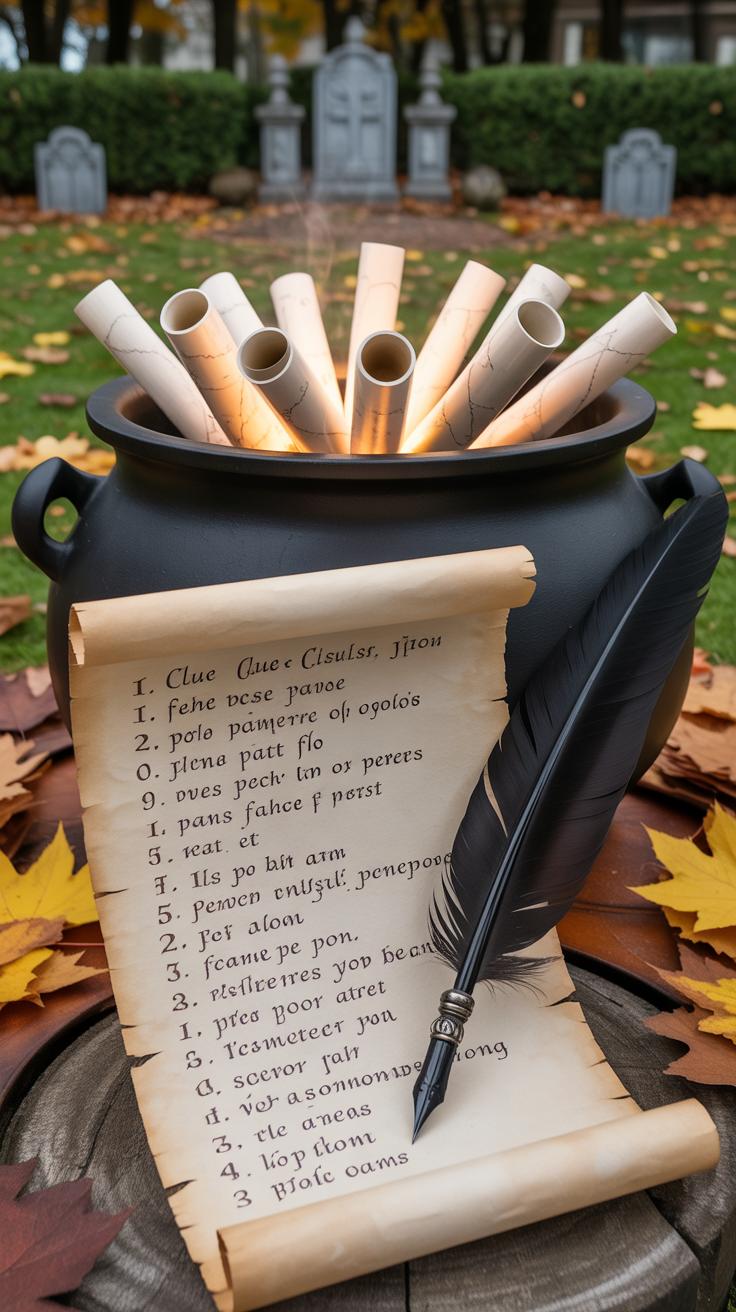
Creating the scavenger hunt list is where the fun really begins, as you get to choose the spooky items kids will search for. Think about objects that fit the Halloween vibe but remain safe and easy to find—plastic spiders, mini pumpkins, or even glow sticks work well here. You want a mix that’s fun without being too tricky or too obvious. Sometimes, a simple paper cut-out of a bat or a witch’s hat can spark just the right amount of curiosity.
Once you have your items, it’s time to write the clues. Kids benefit from clues that make them think just enough without causing frustration. Short, rhyming hints or straightforward riddles work best. For example:
- “Look near the place where the leaves fall down” (for a spot under a tree).
- “Where the shadows creep at night, something small hides just out of sight.”
- “Seek the patch that glows in the dark—follow the light to find your mark.”
These clues invite problem solving but don’t require complex decoding, which can keep little ones engaged rather than overwhelmed. I’ve noticed kids often get stuck on overly complicated hints, so keeping it simple yet playful is key. You might wonder if you should make every clue super spooky. Maybe not—some lightheartedness keeps the game inviting and inclusive for all ages.
Setting Up Your Backyard for the Hunt
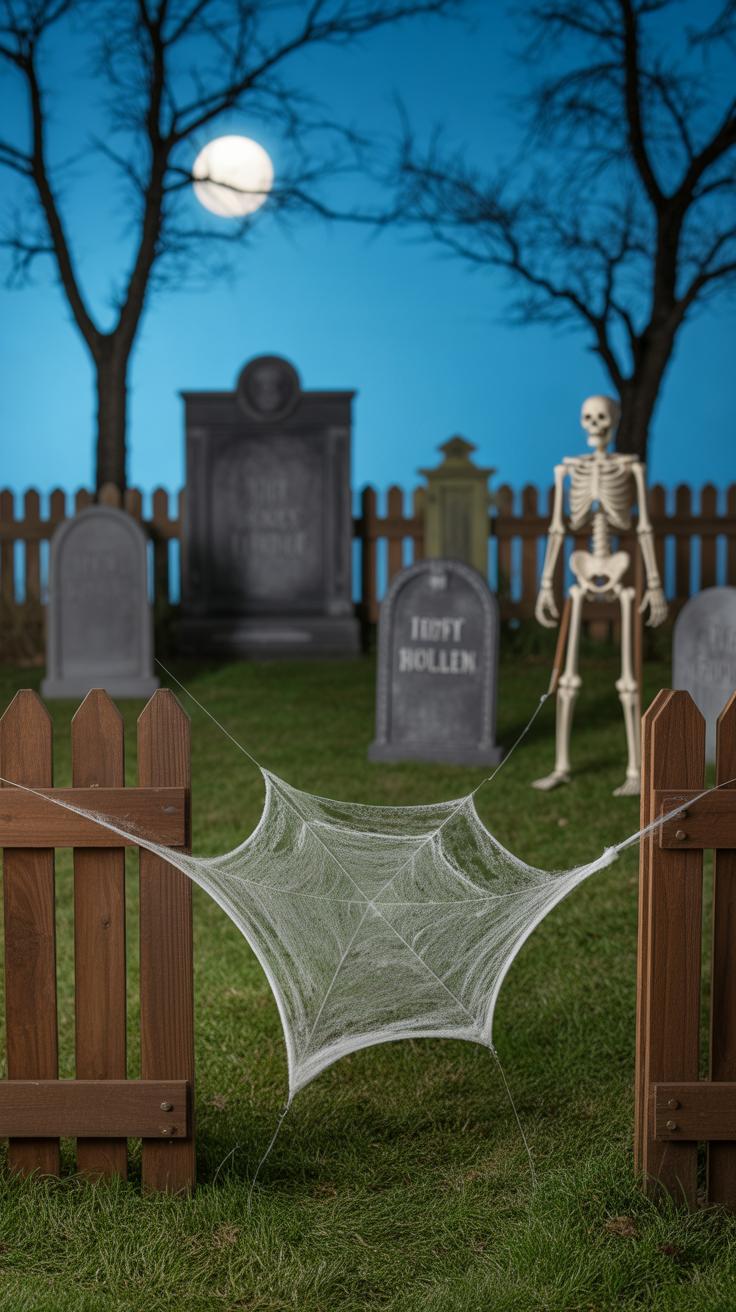
Organizing Safe Hiding Spots
When you start placing items for your Halloween scavenger hunt, think carefully about where you hide them. Safety has to come first—after all, nobody wants a small adventure to turn into a trip or scrape. Stick to spots that are easy to reach without climbing or crawling under anything tricky. Low bushes, sturdy garden furniture, or even simple containers placed on the ground work well. You want your participants to feel challenged, but not frustrated or at risk.
Try to avoid sharp objects, slippery surfaces, or tight corners. Also, double-check that your hiding spots won’t disturb any delicate plants or decorations. It’s a good idea to ask yourself, “Could a child or an adult easily spot and grab this without struggling?” If the answer is no, maybe try another spot. Remember, spots should be hidden but reachable, not impossible.
Creating a Spooky Atmosphere with Decorations
Setting the mood can really pull everyone into the Halloween spirit. Use decorations not just as décor but as part of your game’s environment. Hang faux cobwebs across tree branches where items might rest just underneath. Position glowing jack-o’-lanterns near hiding spots to act as subtle markers—or false leads—depending on how tricky you want the hunt.
Consider dim, flickering lights or lanterns to lend an eerie glow as the sun sets. Even simple things like fake bones, plastic spiders, or Halloween-themed fabric draped over fences enhance the vibe. But don’t crowd the space too much; you want to avoid overwhelming anyone or making it feel cluttered. It’s a delicate balance between spooky and practical.
Have you thought about how the decorations could help conceal clues or prizes? Sometimes a creepy prop can double as a hiding place if you tuck a small item behind it. Just remember—items should blend in well enough to encourage searching, but not so much that participants get discouraged. It’s a bit like a puzzle waiting to be solved, and the decorations are part of that puzzle.
Inviting Participants and Explaining the Rules
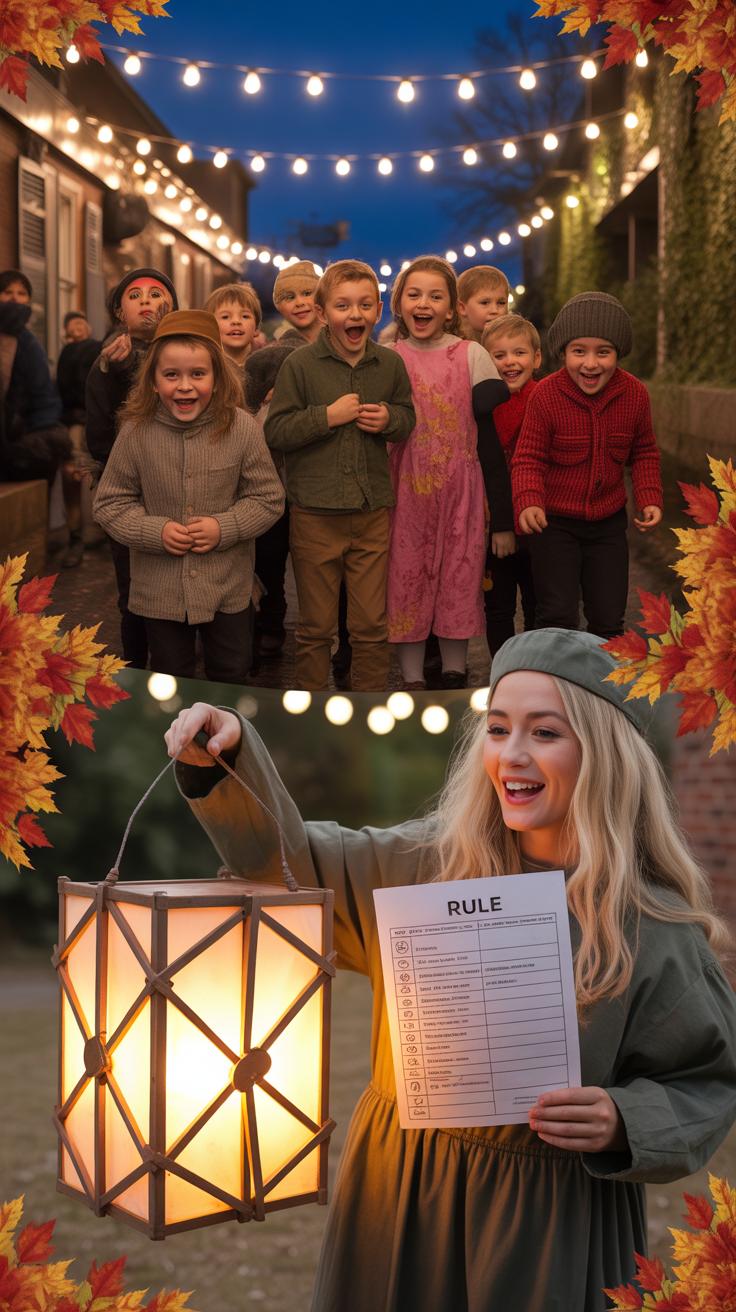
Sending Fun and Informative Invitations
Inviting friends and family to your Halloween scavenger hunt starts with creating invitations that catch attention and spark curiosity. You might want to keep them simple but visually appealing—think spooky fonts or little pumpkin icons. Including key details upfront helps everyone know what to expect: date, time, location, and what to bring if anything. A quick mention about costumes or if parents need to stay can also help avoid surprises.
Some people like to send printed notes, others prefer digital invites. Either way, make sure your message conveys the vibe—maybe a hint at the treasure or some teaser about the spooky items hidden around your yard. When I invited my niece’s friends last year, their excitement grew just from a mysterious phrase like, “Find what lurks beneath the ghostly oak.” It got them talking before the event started.
Setting Simple and Clear Rules
Rules don’t have to be stiff or boring. They just need to keep things fair and safe. Try to stick to just a few points. For example:
- One item found per person at a time.
- Respect others’ space—no rushing or pushing.
- Stay within the yard boundaries.
- No taking things that aren’t on the list.
- Call out when you find something, to avoid confusion.
If you want, add a time limit or a point system. But keep it clear, so no one gets confused mid-game. You might find that kids understand rules better if you explain them with examples or even a quick practice round. Once, I noticed a group getting tangled over who found what, and a brief recap really helped clear things up. Also, remind everyone the goal is fun—not just winning. That usually helps calm competitive nerves and keeps smiles around.
Starting the Scavenger Hunt and Managing Participation
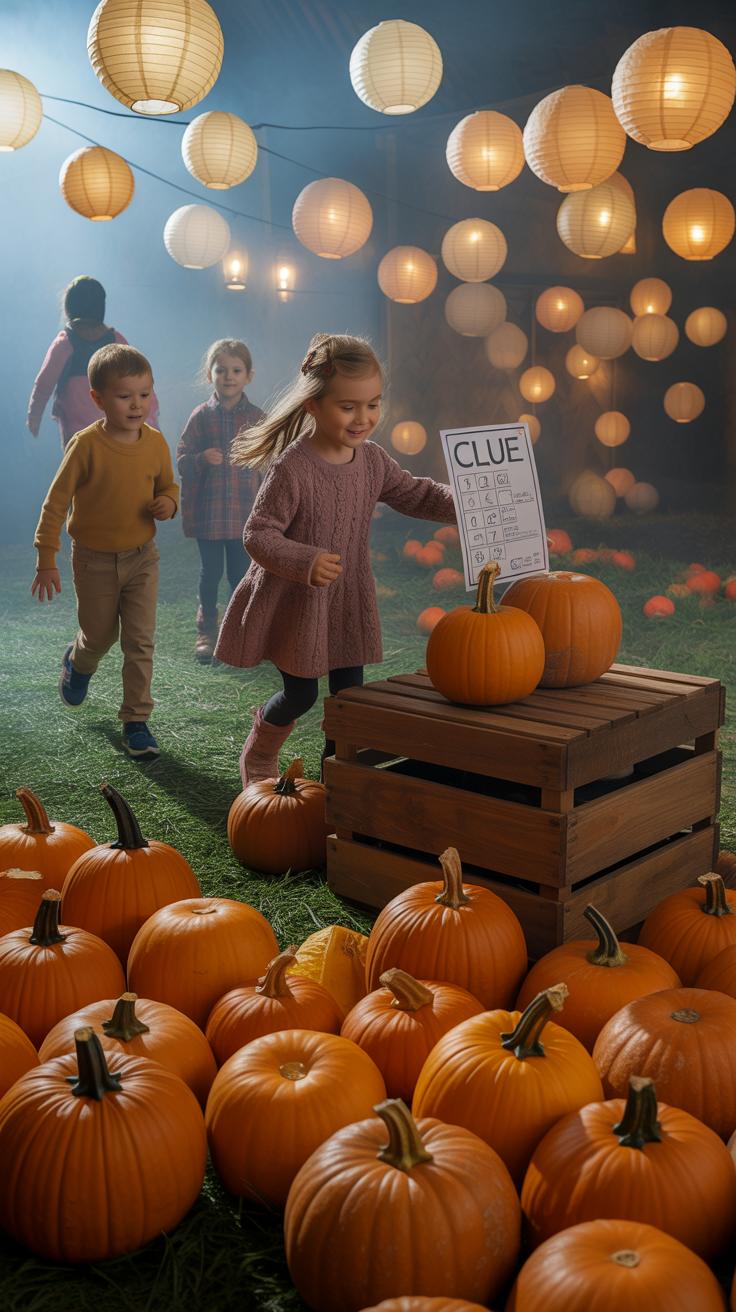
Launching your Halloween scavenger hunt in a way that grabs attention right from the start can really set the tone. You might gather everyone together, maybe around a dimly lit jack-o’-lantern or under the porch light, to share a quick reminder of the rules—just enough to refresh memories without spoiling the surprises ahead.
Then, try giving a clear countdown. Something like, “Ready in 3… 2… 1… Go!” works well. It builds energy and signals precisely when to begin. Let participants know how long they’ll have and what to expect as they track down spooky clues or eerie objects, so no one wanders off wondering what’s next.
Keeping an eye on progress can be tricky, especially if your backyard has lots of hiding spots. You could assign a helper to each team or individual—someone who checks in periodically with them. Or, if that’s too much, scatter check-in stations where players report when they’ve found certain items. These little pauses help you track who’s still in the game without interrupting the fun too much.
What if someone gets stuck or lost? Having a way to signal you, maybe a small whistle or flashlight flash, gives them some reassurance. And it keeps the flow going without causing long delays. Watching everyone’s excitement build as they move from clue to clue is pretty rewarding, even if a few stray off path now and then—it’s part of the charm, really.
Adding Fun Challenges and Rewards to Motivate Players
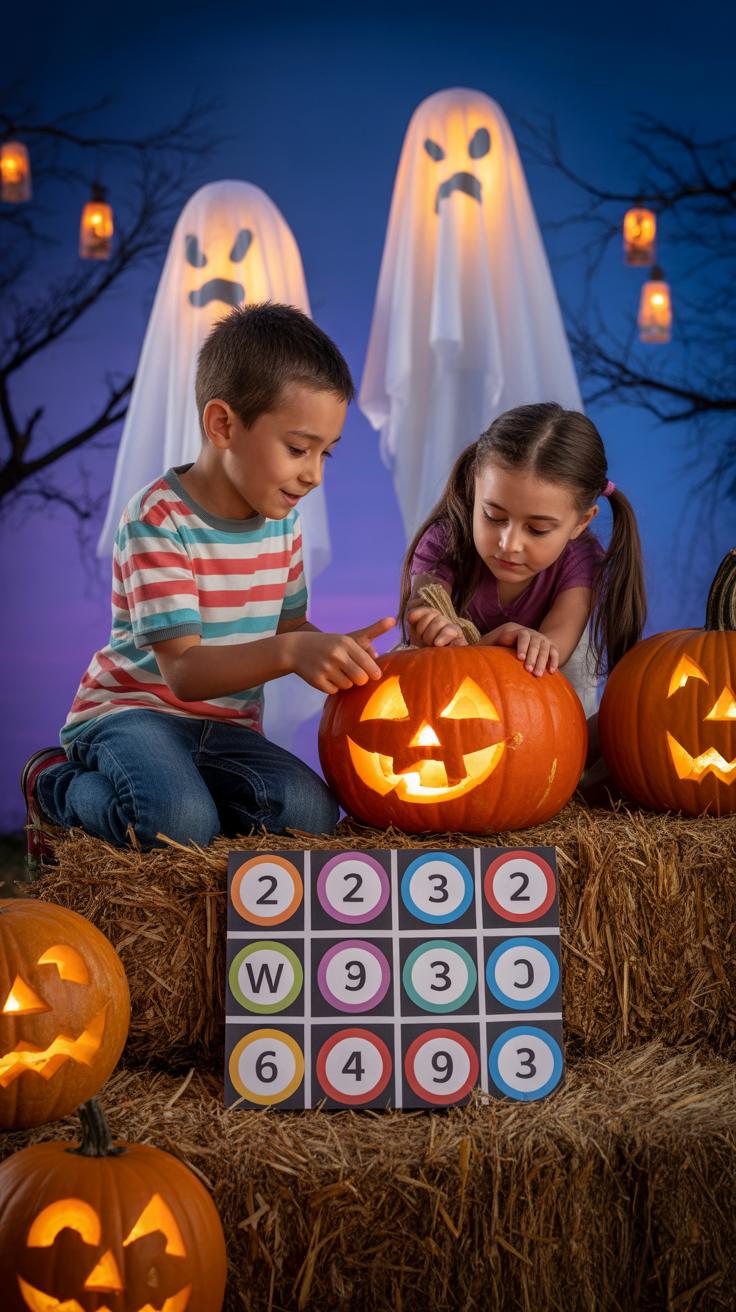
To keep the scavenger hunt lively, try slipping in mini-challenges that have a Halloween twist. These don’t need to be complicated—something simple like a quick riddle about a spooky creature or a guess-the-sound game (think creaking doors or howling wolves) can add an extra layer of fun. You could even have players perform a little task, like balancing a fake spider on their fingertip or solving a pumpkin-themed puzzle to earn bonus points. These small bursts of activity break the routine and give players a moment to catch their breath while staying engaged.
Prizes, of course, play a big role in motivation—but what fits one age group might miss the mark for another. For kids, small plastic toys, Halloween-themed stickers, or glow sticks might hit the spot. Older kids and adults might enjoy more practical rewards, like fun candies, spooky socks, or even quirky mugs. I’ve found you can make fewer prizes last longer by offering “mystery boxes” that keep people curious and eager. Choosing prizes that feel a little special—nothing too extravagant, just nice enough—makes participants feel their efforts are seen and appreciated.
What kind of challenge would surprise your group? Maybe a quick “monster pose” contest or a short blackout maze with a flashlight? The key is mixing playfulness with a bit of competition, giving everyone something to look forward to during the hunt.
Wrapping Up the Event with a Halloween Celebration
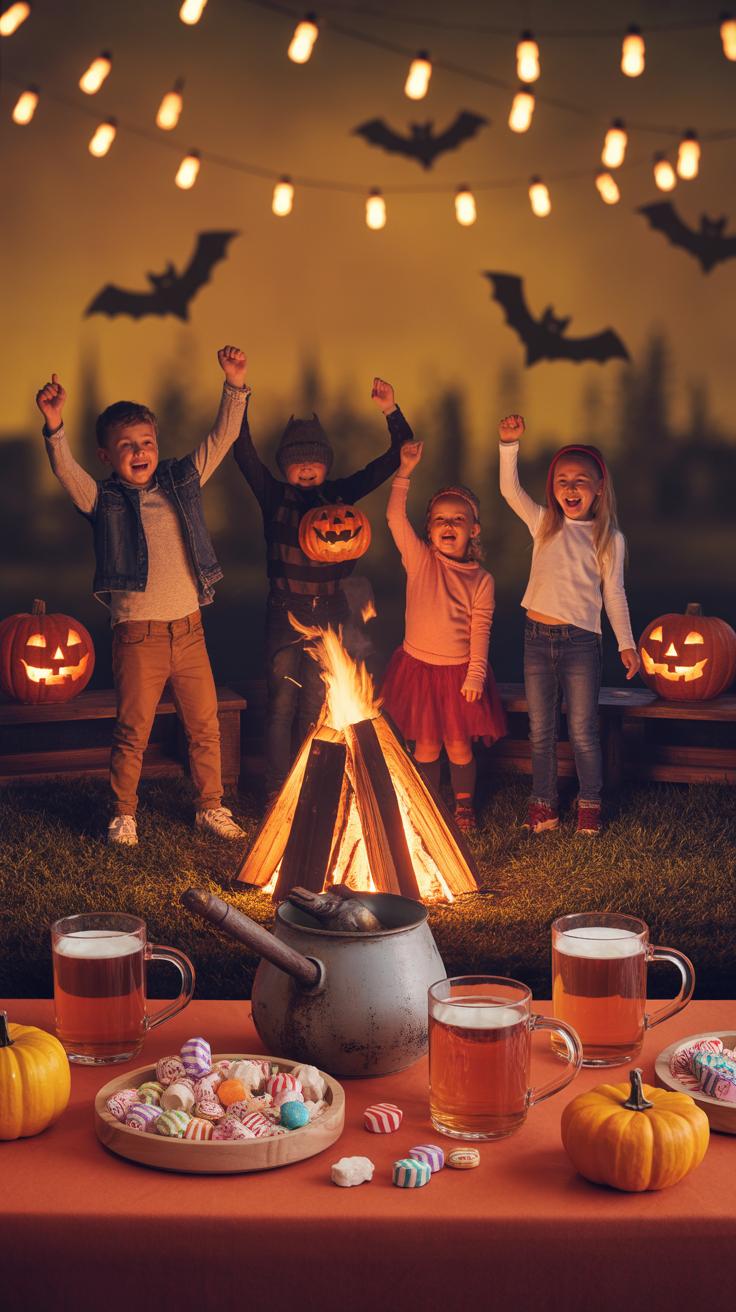
Announcing Winners and Sharing Stories
When the scavenger hunt winds down, take a moment to bring everyone together. Announcing the winners is a natural way to close the game, but don’t stop there. Celebrate all the players, not just those who found the most items. Maybe even share a few funny or surprising stories that popped up during the hunt—like the time someone got a little too spooked by a hidden spider or when a clever clue had everyone guessing for longer than expected.
These stories often become the best part of the event, sparking laughter and connection. You might even want to ask players to share their favorite moment or the item they found that surprised them. This informal storytelling helps wrap up the game on a warm, positive note.
Organizing a Post-Hunt Party
Right after, keep the energy going with a small celebration. Setting up some simple decorations—think pumpkins, string lights, or eerie silhouettes—makes the backyard feel festive and cozy. For snacks, offering a mix of classic Halloween treats alongside some easy, shareable options works well. Cookie-covered “mummy” hot dogs, caramel apples, or bowls of popcorn can hit the spot.
Background music plays a subtle but important role. Choose a playlist that’s festive but not overpowering—maybe classic Halloween tunes or instrumental spooky themes. This keeps everyone in the spirit without cutting off conversation. And, honestly, it’s great to have a spot where people can sit, relax, and chat about the hunt, making the party feel like a natural extension rather than an unrelated event.
At the end of the day, wrapping up with recognition and some casual fun leaves a lasting impression. You want everyone to leave feeling included and already curious about what will come next year.
Tips for Making Your Halloween Scavenger Hunt a Tradition
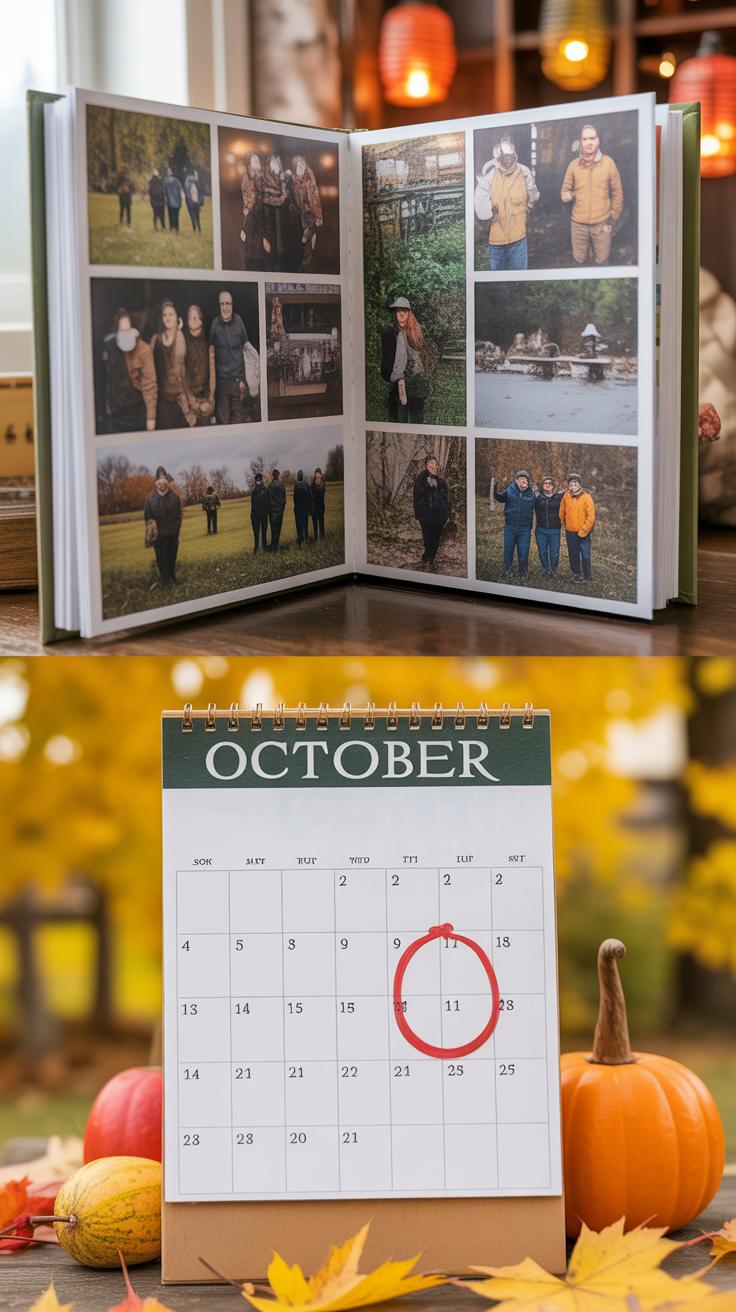
Turning your backyard Halloween scavenger hunt into a yearly event takes a bit of effort, but it can really grow into something special for everyone involved. One way to keep it going is by tweaking the hunt after each year. Maybe one clue was too hard, or another prize was a big hit—pay attention to what worked and what didn’t. Don’t hesitate to jot down your ideas or changes right after the event while they’re fresh.
Gathering feedback can feel a bit awkward sometimes, but it’s surprisingly easy. You might ask kids what they liked best or what they’d want to see next time, or casually chat with parents about any suggestions. Even a quick text or email can give you helpful pointers. Sometimes people won’t volunteer thoughts unless you specifically ask, so keep it simple and informal.
Changing up themes keeps things interesting, too. One year, you might focus on spooky monsters; the next, try a haunted pirate adventure or mysterious witches’ brew. Adding small twists—like timed challenges or team play—can also freshen things up. It’s tempting to stick to the same format, but a little variation helps everyone stay eager to join each October. Does that mean the perfect tradition has to be always the same? Not really. Maybe the best traditions evolve.
Conclusions
Setting up a Spooky Backyard Halloween Scavenger Hunt Adventure offers a fresh and engaging way to celebrate Halloween. It gives participants a chance to explore, solve clues, and experience the thrill of discovery right in a safe backyard setting. Each step, from planning to execution, contributes to making your event unforgettable.
By implementing the ideas and tips provided, you can create a challenge that suits all ages and keeps the Halloween excitement going strong. This game provides an alternative to traditional Halloween activities and invites everyone to enjoy the holiday in a new light. Try it out and watch your backyard fill with laughter and spooky fun.


